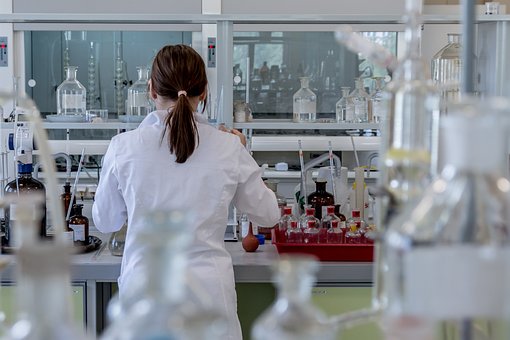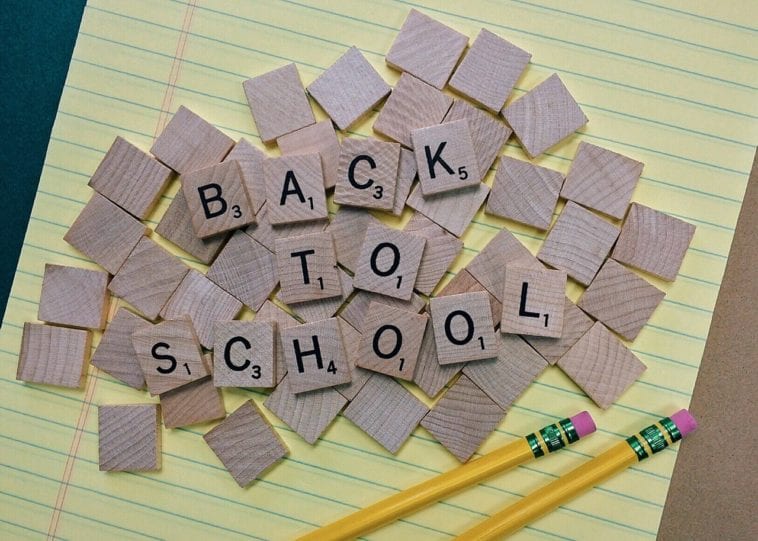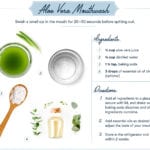Going Back to School: Can This Be A Zero Waste Process, Too?
Most students are as sick of the pandemic and quarantine as the rest of us and are eager to return to school. However, it’s essential to teach them to practice zero waste at school because everyone has a role to play in climate change and sustainable living. Education is key to addressing it.

To help you guide students to live with less waste and more meaning, I asked several lifestyle bloggers, environmental experts, educators, and education industry insiders for their insights on a more eco-friendly back-to-school routine. So get inspired to go zero waste even back at school with other students, teachers, and staff.
Follow this guide and share the different tips with your family and friends!
Environmental impact of school
Paper and Food Waste
Jessica Robinson from The Speaking Polymath says that school waste is mainly from paper and food. Every year a lot of paper and food waste is generated by schools. Notebooks, books, printed information, question papers, answer sheets, and homework sheets are some ways schools use paper. Moreover, students waste a lot of food which they bring from home and buy from canteens.
Energy Consumption

Melanie Musson of Clearsurance also says, “The amount of energy and resources used to support lighting, heating, and water consumption can be astronomical. Fortunately, a growing number of schools have committed to sustainability, and their actions lessen their negative environmental impact.
Specialized machinery and lab work

For Will Peach, a 4th-year medical school student (MUV), career changer, and keen educator, passionate about healthcare and medical education, the environmental impact of med school is probably one of the biggest of all subjects. Their education is rigorous and requires specialized equipment, machinery, and practical lab work that consumes so much energy and non-renewable resources. It’s definitely in need of an overhaul ecologically, something that we as students have tried to push by vetoing and voting against lab practicals with big carbon footprints.
How to motivate students to go back to school
Ask them
Antonio Cruz, a mentor with Ivy Scholars, a private educational consulting company, says, “For those who seem reticent, inquire as to why: are there social problems at school? Have they had more success with distance learning? Are they merely trying to shirk on their work? For motivating the latter case, focus on the parallel benefits offered by the school: friends, sports, clubs, music, and all of the myriad activities with which they can spend their time.”
Laud previous achievements

Another thing for Hitesh Agarwal, Director of TechExactly, one of the great ways to motivate kids is to remind them about what great achievements they made in the pre-COVID era. Tell them that there is a chance to be taken for better performances this year. Additionally, ask and listen to what motivates your kids. Then, communicate on that with them and help them understand – in the post-COVID era.
Engage them with stories and games

For Jozef Raczka, Content Executive at Twinkl, the simplest way to make this a motivated initiative is to make it part of their standard education while also keeping it fun. While it can be essential to present children with serious issues such as deforestation, it is also necessary to keep them interested and invested, such as engaging them with stories or games.
Stylish, upcycled accessories

According to Jessica Robinson, although different students have different motivating forces that can motivate them to go back to school, stylish accessories and meeting with friends are two things that can inspire students of all age groups to get back to school. Further, stylish accessories don’t mean that parents have to buy new ones. Instead, they can help their kids stylishly decorate their old school bag and give them a new look.
How going zero waste can save your money while preparing to go back to school
The concept of ‘zero waste’ includes utilizing everything to its maximum. Once we adopt this strategy, savings are bound to happen. For example, if a child has an old pencil box
that hasn’t broken yet, parents can help him decorate it with his favorite stickers and turn it into something new, rather than buying a new pencil box. This way, they can save money easily.
Jozef Raczka also notes a push starting for sites like The Uniform Exchange in Australia that allows people to get excellent second-hand uniforms, which could be the way forward. It stops them from filling up cupboards or piling up landfills while also saving some money.
Tips to go back to school with less waste (for free)
Be mindful of the snacks that you give children to take to school.

Instead of snacks that come in plastic bags, Youmna Rab of Sustainably Yours recommends snacks that you can store in reusable ziplock bags or glass containers. Some great options include veggies and hummus, fruit, and mixed nuts (if allowed). You can even make homemade granola bars or energy balls to send. By making it at home, you don’t have to worry about the individual packaging that it comes in.
Reuse what you have before buying new!
This is one of the best ways to go back to school with less waste. You should try to reuse your stationery and other supplies if they haven’t been used to their full potential.
In particular, Jessica Robinson advises: “Get your old notebooks, find all the unused pages, collect them and get them bound into new notebooks: If you need new notebooks, get all your old notebooks, find the unused pages, collect them and get them bound into new
notebooks. This is one of the best ways to reduce paper waste and save money.
Zero waste school routine tips:
Zero waste lunch
Take only as much as you can eat.
Moreover, if you cannot eat your entire lunch, try eating it after coming back home. You can even share your lunch with friends and stray animals so that you produce zero food waste.

Innovate what you have and switch to reusables
For Dr. Erica Dodds, CEO of the Foundation for Climate Restoration, innovate your lunch: Don’t let your veggies or food go to waste – whip up something new and surprisingly delicious out of the food that’s about to go bad and help stop the massive global food waste. There’s a lot of food that can make up a good stir fry or get thrown into a soup. Other small changes like switching to reusable water bottles and coffee mugs will produce less plastic waste and promote better hygiene.
Uniforms
If you want new, buy durable clothing

Clothes have a deep impact on our environment. Hitesh Agarwal advises: Instead of buying a fancy piece of clothing that won’t last long, try to buy your child clothing that is durable, flexible, last long, and most importantly – can be reusable. Cashmere fashion is a good, sustainable option – naturally soft, light, and breathable, perfect for every season.
Swap clothes and buy secondhand
To Dr. Erica Dodds, the grass is greener…in your friends’ closets: Shop second hand to get the best vintage clothes and mine through your friends’ closets to get the best finds – while saving the planet. Clothing swaps and trying your friends’ styles is a fun and easy way to spend your Friday night!
Travel
Cycling, walking, carpooling, and using public transport are some effective ways students can travel to school with minimum wastage of energy, says Jessica Robinson.
Zero Waste School Supplies
Refuse plastic water bottles
According to Greens Steel Founder Abdullah Green, we often think of bigger purchases when we think about going to zero waste. Still, there are small steps you can take in your and your children’s day-to-day life that will significantly help in reducing your environmental footprint. The easiest is not upgrading or buying a new plastic water bottle daily or weekly. Last year, the average American used 167 plastic water bottles which takes a great deal of energy to produce and thousands of years to break down.
Digitize books
According to Will Peach, the best way to go zero waste in allied health education is to ditch any paper books and digitize everything as much as you can. There’s no real reason, in 2021, to be studying from massive paper-based textbooks when everything you need to pass courses is online and available for free. Ensuring you access these things from one electronic device only also minimizes your carbon footprint long-term.
Get hand-washed secondhand supplies
The same goes for medical supplies. Why buy new scrubs when nicely hand-washed second-hand pairs will do just as good a job. So, yes, there are reasons for sterilization and sanitization in our field of study, but there’s also a lot of needless waste in the form of use-once PPE.
Plant with your pencils
Plantable pencils: Wooden sprout pencils are plantable in nature. They are capped with a biodegradable seed capsule. Once you have used your pencil completely, you can stick them in soil. But, you have to do this according to the planting guide provided with the pencil. This way, you can grow your pencil into a plant.
Conclusion
Your school days aren’t just about learning the syllabus. They are about raising the sorts of people we want to see in the world. So encouraging children to have a positive attitude towards reuse, recycling, and zero waste from an early age will set them in the right stead, says Jozef Raczka.
For Dr. Erica Dodds, it’s easy to arm the next generation of youth climate activists with facts and give them hope with the new online Climate Restoration Course. This course, created by the Foundation for Climate Restoration (F4CR), is specially designed by teachers. With age-appropriate modules dedicated to explaining climate change, demystifying climate restoration, and debunking myths, your students will complete the course feeling confident about their knowledge and empowered to make the difference our planet needs. Activities include a letter-writing contest, a drawing contest, and a final quiz.
The Earth is our home. It supports our life. But, today, wastage and pollution created by us have led our planet to ill-health. Global warming, Ozone layer depletion, and soil degradation are some examples of diseases mother Earth is suffering from today. To save our planet and thus, save the lives of our future generations, we must teach and encourage our kids to minimize pollution and wastage of things. Going zero waste at school is one of the best steps we can take in this regard. It’s parents’ responsibility to help their kids go zero waste at school.
Envision the planet that you want to see in 2021. Ask not what your planet can do for you, but what you can do for your planet. Align your actions with the outcome you want to see, and take heart in the fact that your actions make a difference. The more you can do to make the planet livable, the less eco-anxiety you’re likely to have.
If kids can learn to be zero waste, they’ll be set up for a life of consciousness to their contributions to the betterment or hindrance of the planet. In addition, zero waste habits have an immediate positive impact and a long-lasting positive effect on the environment as kids continue implementing what they learn for the rest of their lives.




